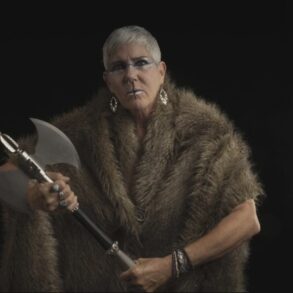
After the breakthrough year she has had, Sabrina Carpenter is likely to contend in multiple categories when Grammy nominations are announced Nov. 8. Her latest studio project, Short n’ Sweet, is considered a shoo-in for a best pop vocal album nod and could potentially be up for album of the year. And she could even land a nomination for best new artist — despite Short n’ Sweet being her sixth full-length.
How can an artist who has released six albums be in the conversation for best new artist? Because, while the Grammys set a minimum number of releases an artist must have to qualify in this category (five singles/tracks or one album), there is no maximum. Instead, the Grammys’ rules and guidelines booklet says nominations for the honor hinge on when “the artist had attained a breakthrough or prominence” — and it delegates that determination to a screening committee.
So Carpenter’s potential nomination comes down to whether the screening committee thinks she had achieved prominence as of Sept. 15, 2023, the last day of the previous eligibility year. At that point, the highest she had ever climbed on the Billboard Hot 100 was a decidedly decaf No. 48, for “Skin” in February 2021. She performed on the MTV Video Music Awards’ preshow on Sept. 12, 2023. (This year, by contrast, her medley of three hits that had each reached the top three on the Hot 100 was a highlight of the main show.)
Trending on Billboard
Megan Moroney is another not-quite-so-new artist whom the screening committee will likely discuss at length. She had a No. 30 hit on the Hot 100 in May 2023 with “Tennessee Orange,” and her popularity has continued to build since: In May 2024, she won new female artist of the year at the Academy of Country Music Awards.
Other top contenders in the category this year, including Chappell Roan, Benson Boone, Shaboozey, Teddy Swims, Sexyy Red and Reneé Rapp, more clearly fit the best new artist criteria the Grammys outline.
The rules in this category have changed over the years as the Recording Academy has struggled to strike just the right balance: not too strict, not too lenient. In the past, the academy has sometimes disqualified artists for reasons that may now seem petty; take Whitney Houston, who had recorded a couple of duets prior to releasing her debut album and was therefore deemed ineligible, or singer-songwriter Richard Marx, who had contributed a song to a soundtrack. Other times, the academy has leaned too far in the other direction. Robert Goulet won in 1963, two years after he became a star in the Broadway musical Camelot. When Alessia Cara claimed the prize in 2018, it was nearly two years after her ballad “Here” hit the top five on the Hot 100.
Three past winners for best new artist — Crosby, Stills & Nash (who won in 1970), Jody Watley (1988) and Lauryn Hill (1999) — wouldn’t be eligible under today’s rules. David Crosby, Stephen Stills and Graham Nash were all already known for their work in previous groups, as were Watley (in Shalamar) and Hill (Fugees).
Perhaps the academy should have just named the award “best new or developing artist” or “best breakthrough artist” to skirt the issue of whether these talents were truly new, but given the marquee award’s notoriety, such a change is now unlikely. Voters are probably stuck with best new artist — along with the yearly debates over who should and shouldn’t qualify for it.
And if Carpenter isn’t just nominated but steps onto the stage on Grammy night to accept the award, well, it won’t be without precedent. In 2001, Shelby Lynne won the accolade — precisely six albums into her career.
This story appears in the Oct. 5, 2024, issue of Billboard.







